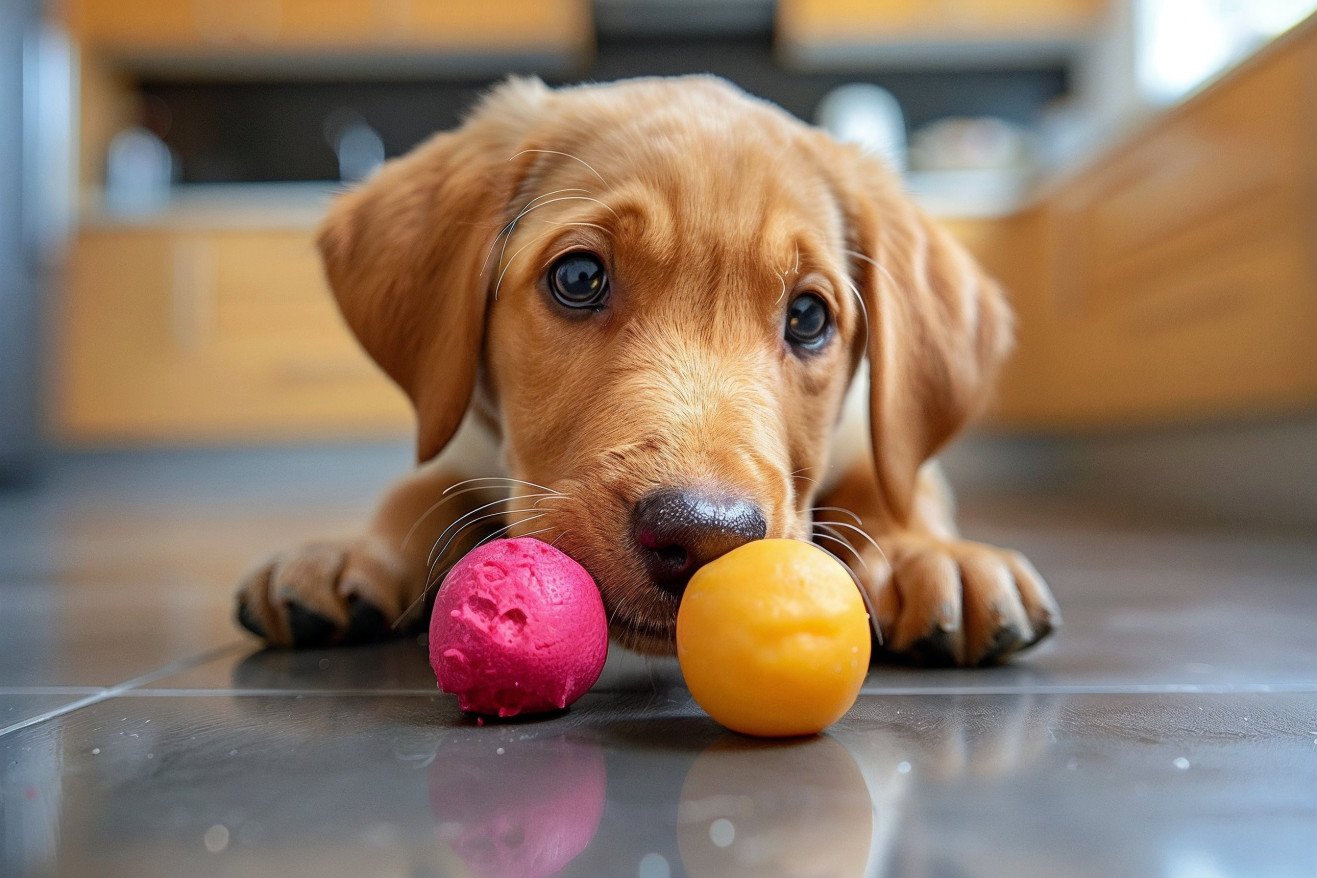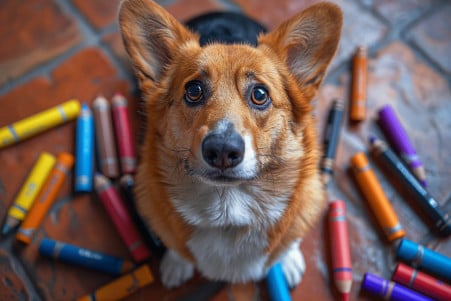Can Dogs Eat Playdough? A Complete Safety Guide
11 June 2024 • Updated 10 June 2024

If you've ever had a dog, you know that they can be curious and get into all sorts of things. This is why many pet parents have probably asked themselves if it's safe for their dog to play with modeling compounds like playdough. Here, we'll cover the potential dangers and safety measures. While playdough is not toxic to dogs in small amounts, it can lead to gastrointestinal distress, such as vomiting or diarrhea, if a dog eats a lot of it. The high salt content also makes it unappealing to most dogs. However, it can be a choking hazard, so it's best to monitor your dog when they're playing with playdough.
To help you better understand the risks of playdough toxicity in dogs, we'll look at information from veterinary medicine, toxicology research, and safety standards for kids who use these types of modeling materials. We'll cover the chemical makeup, risks of ingestion, and safety and storage recommendations so that you can feel confident in your ability to keep your dog safe when introducing playdough or other modeling compounds.
Is playdough toxic to dogs?
Homemade Playdough and Salt Toxicity in Dogs
While kids can have a blast with playdough, homemade versions can be especially dangerous for dogs. According to the American College of Veterinary Pharmacists, homemade playdough recipes often contain high levels of salt that can lead to salt toxicity in dogs.
The results of salt toxicity can be dire and include vomiting, diarrhea, lethargy, tremors, and even seizures or neurological issues that can be life-threatening, according to a study in the Journal of Veterinary Emergency and Critical Care. Even small amounts of salt can lead to these symptoms, with as little as 1.9 grams of playdough per kilogram of body weight leading to potential problems.
Salt toxicity is even more likely in smaller dogs due to their lower body weight, with a Yorkie or Chihuahua potentially experiencing salt toxicity after ingesting less than a gram of homemade playdough. While larger dogs like Retrievers or German Shepherds have a higher threshold for salt toxicity, they can still experience salt poisoning if they eat enough of the salty substance.
If your dog does eat a large amount of homemade playdough, it’s important to get them to the vet as soon as possible to treat potential salt toxicity and dehydration, as EthosVet points out. By being aware of these dangers, dog owners can work to protect their pets from the threat of homemade playdough.
Risks of Store-Bought Playdough
In general, store-bought playdoughs like Play-Doh are safer for dogs than homemade versions. According to Canine Journal, Play-Doh is made mostly of water, salt, and flour, which is less dangerous than the high salt content in many homemade recipes. However, the specific ingredients in Play-Doh are a trade secret, so the risks are not fully known.
Although small amounts of Play-Doh are unlikely to cause problems, Vets Now warns that larger amounts can cause stomach upset and potential blockages. In addition, Dogster explains that dogs with wheat allergies or sensitivities can have negative reactions to the wheat-based ingredients in Play-Doh.
No matter what the specific ingredients are, it’s still best to supervise dogs when they’re playing with Play-Doh to prevent them from eating it and choking on it. Knowing the risks can help dog owners make sure they’re taking the right steps to keep their pets safe when they’re playing with store-bought playdoughs.
How to Store and Handle Playdough Safely With Dogs
In order to avoid accidental playdough consumption by dogs, it's important to store it in a secure location that's out of reach, as suggested by the Golden Retriever Dog Forums. It's also important to always supervise children while they're playing with playdough and to clean up any messes or leftovers as soon as possible.
Alternatively, Huiliantoy recommends using pet-friendly modeling clays or making your own playdough with ingredients that are safe for dogs. If your dog does eat playdough, it's important to make sure to act fast and call a vet or pet poison control hotline for help. In some cases, a vet may recommend that you induce vomiting under their supervision if your dog has eaten a large amount of playdough to avoid complications.
By making sure to store and handle playdough in these ways, dog owners can reduce the risk and make sure their dogs are in a play environment that's free from potential hazards.
How to Identify and Treat Salt Poisoning in Dogs
Salt poisoning, or salt toxicosis, is a life-threatening condition that occurs when a dog consumes too much sodium, according to Vetster. Symptoms of salt poisoning include vomiting, diarrhea, increased thirst and urination, lethargy, lack of coordination, tremors, and seizures. In some cases, salt poisoning can even cause the brain to swell, as Spot® notes.
To diagnose salt poisoning, a veterinarian will perform a physical exam and run bloodwork and a urinalysis to check for high sodium levels and dehydration. While there is no specific antidote for salt poisoning, treatment will involve rehydration, supportive care, and potentially lowering sodium levels with a veterinarian's help, according to the Journal of Veterinary Emergency and Critical Care. The prognosis is poor for dogs with severe salt poisoning or those who don't receive treatment quickly, so it's important to seek medical help as soon as possible.
Conclusion: How to Keep Dogs Safe Around Playdough
While playdough is generally non-toxic in small amounts, it can pose risks to dogs, especially homemade varieties with high salt content. Ingesting large quantities can lead to salt poisoning, a potentially fatal condition requiring prompt veterinary treatment. Store-bought playdough is typically safer but can still cause gastrointestinal issues or blockages if consumed in excess.
To keep dogs safe, store playdough securely, supervise playtime, and seek professional advice if accidental ingestion occurs. By understanding the risks and taking appropriate precautions, dog owners can introduce playdough while minimizing potential dangers.


